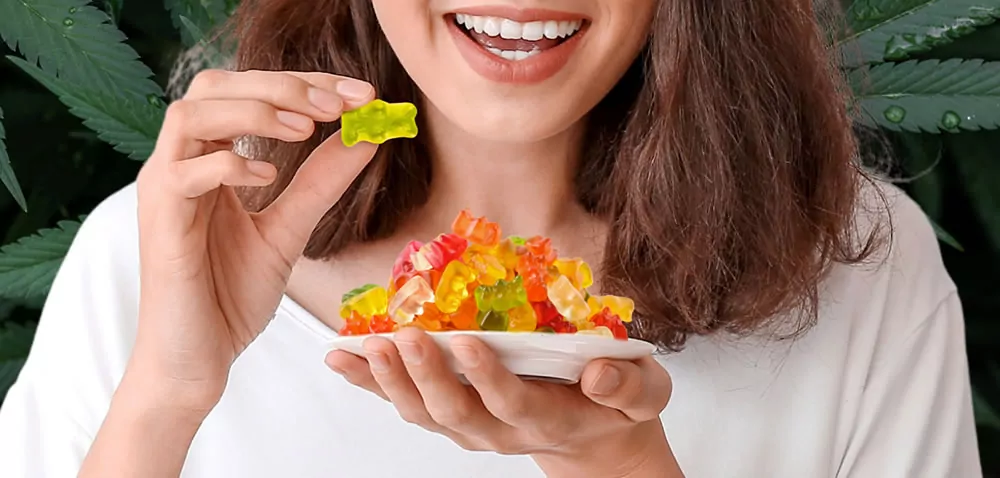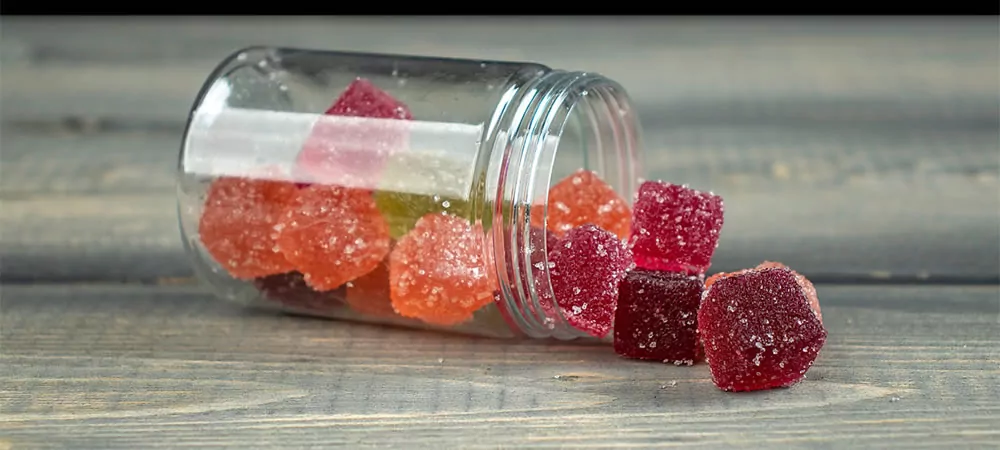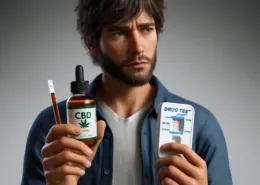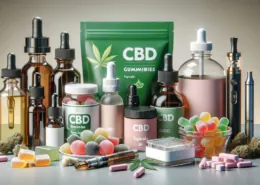Guide to CBD Gummy Dosage: Finding the Right Amount for Your Needs
If you’re new to the world of CBD gummies, you might find yourself wondering, “How many CBD gummies should I eat?” It’s a common question, and one that doesn’t always have a straightforward answer. The truth is, CBD dosage can vary greatly from person to person, depending on a range of factors such as body weight, metabolism, tolerance, and the specific condition being treated1.
In this comprehensive guide, we’ll dive deep into the world of CBD gummy dosage, exploring the key factors that influence how much you should take, recommended dosages based on various criteria, and important considerations to keep in mind when incorporating CBD gummies into your wellness routine.
Understanding the Factors That Influence CBD Gummy Dosage
Before we delve into specific dosage recommendations, it’s crucial to understand the various factors that can impact how your body responds to CBD. These include:
1. Body Weight and Metabolism
Your body weight and metabolic rate play a significant role in determining your ideal CBD dosage. Generally speaking, individuals with higher body mass may require larger doses to experience the desired effects, while those with lower body weight may need less2. Similarly, if you have a fast metabolism, you might metabolize CBD more quickly, potentially needing slightly higher doses or more frequent administration. Studies indicate that CBD is primarily metabolized by the liver’s cytochrome P450 enzyme system, which can vary in efficiency between individuals3.
2. Tolerance to CBD
Like many substances, regular use of CBD can lead to the development of tolerance over time. If you’ve been taking CBD gummies consistently for an extended period, you may find that you need to gradually increase your dosage to maintain the same level of effectiveness4. This is why it’s often recommended to start with the lowest possible dose and slowly work your way up as needed, an approach supported by medical professionals specializing in cannabinoid therapeutics5.
3. Severity of the Condition Being Treated
The optimal CBD dosage can also vary depending on the specific condition you’re using it for and the severity of your symptoms. For example:
- Sleep: Higher doses of CBD (160mg and above) may be more effective for managing insomnia and promoting better sleep quality, according to clinical trials conducted by sleep researchers6.
- Anxiety: A 2019 systematic review found that mild to moderate anxiety may respond well to lower doses (5-15mg), while severe anxiety or panic attacks might require higher doses (up to 300mg)7.
- Pain: The dosage for pain management can vary widely depending on the intensity of the pain and its underlying cause. A 2020 study published in the Journal of Clinical Medicine found that minor discomfort may benefit from doses as low as 5mg, while more severe or chronic pain conditions might necessitate much higher doses, often in combination with THC8.
4. Desired Effects
Your specific goals and desired outcomes will also influence your ideal CBD gummy dosage. Are you looking to manage mild stress and promote relaxation? Or are you seeking relief from chronic pain or inflammation? Research published in the British Journal of Clinical Pharmacology suggests the amount of CBD needed to achieve desired effects can vary significantly based on individual needs and the specific physiological systems being targeted9.
5. Type of CBD
It’s important to note that there are different types of CBD, each with its own unique properties and potential effects. The three main types are:
- Full Spectrum CBD: Contains CBD and trace amounts of THC (less than 0.3%), along with other beneficial compounds found in the hemp plant. Research published in Frontiers in Plant Science supports the “entourage effect” theory, suggesting that these compounds may work synergistically to enhance the therapeutic potential of CBD10.
- CBD Isolate: Pure CBD, with no other compounds present. A 2015 study published in Pharmacology & Pharmacy suggests that higher doses may be needed to achieve the same effects as full or broad spectrum CBD11.
- Broad Spectrum CBD: Contains CBD and other cannabinoids, but no THC. This option may offer some of the benefits of the entourage effect without the potential psychoactive effects of THC, though more research is needed in this specific area12.
When choosing CBD gummies, always look for products with transparent labeling that clearly indicates the type of CBD used, as well as the concentration per gummy.

Recommended CBD Gummy Dosages
Now that we’ve covered the key factors that influence CBD dosage, let’s explore some general dosage guidelines based on body weight and product strength.
CBD Gummy Dosage Based on Body Weight
One common approach to determining your starting CBD dose is to use a weight-based calculation. A review of clinical CBD studies suggests taking 1-5mg of CBD per 10 pounds (4.5kg) of body weight13. For example, if you weigh 150 pounds (68kg), you might start with a dose of 15-75mg.
Here’s a quick reference guide for suggested dosages based on weight:
| Body Weight | Mild Effects (mg) | Moderate Effects (mg) | Strong Effects (mg) |
|---|---|---|---|
| Under 100 lbs (45 kg) | 10 or less | 11-13 | 14-16 |
| 100-130 lbs (45-59 kg) | 11 or less | 12-14 | 15-17 |
| 130-160 lbs (59-72 kg) | 14 or less | 15-17 | 18-20 |
| 160-190 lbs (72-86 kg) | 16 or less | 17-19 | 20-23 |
| 190-230 lbs (86-104 kg) | 18 or less | 19-23 | 24-27 |
| 230-260 lbs (104-118 kg) | 20 or less | 21-25 | 26-30 |
| Over 260 lbs (118 kg) | 23 or less | 24-30 | 31-45 |
Keep in mind that these are general recommendations based on observational studies, and individual needs may vary significantly14. It’s always best to start with the lowest effective dose and gradually increase as needed.
CBD Gummy Dosage Based on Strength
Another important factor to consider when determining your ideal dosage is the strength or concentration of the CBD gummies you’re using. CBD gummies can vary widely in terms of CBD content, with some containing as little as 5mg per gummy and others packing 50mg or more.
If you’re new to CBD, it’s generally recommended to start with a low-dose gummy (5-10mg) and see how your body responds. This approach is aligned with the “start low, go slow” principle advocated by clinicians in the medical cannabis field15. Once you have a better understanding of your individual needs and tolerance, you can experiment with higher-strength gummies or adjust your dosage by cutting them into smaller pieces.
Finding Your Optimal CBD Gummy Dosage
Ultimately, finding the right CBD gummy dosage for you will likely involve some trial and error. A 2018 review published in Cannabis and Cannabinoid Research emphasized that everyone’s endocannabinoid system is unique, and what works well for one person may not be ideal for another16. The key is to start low, go slow, and listen to your body.
A good starting point is to take a low dose (5-10mg) and monitor your body’s response over the next several hours. If you don’t notice any effects after an hour or two, you can try slightly increasing your dose the next day. Continue this process until you find the minimal effective dose that provides the desired effects without causing any unwanted side effects.
It’s also important to be consistent with your dosing. Clinical practitioners recommend taking your CBD gummies at the same time(s) each day, and giving your body a few weeks to fully adjust before making any significant changes to your dosage17.

Important Considerations and Precautions
While CBD gummies are generally considered safe and well-tolerated according to a comprehensive 2017 review by the World Health Organization18, there are a few important things to keep in mind when incorporating them into your wellness routine:
Potential Side Effects
Although rare, some people may experience side effects when taking CBD gummies, especially at higher doses. A systematic review of clinical studies published in Cannabis and Cannabinoid Research identified these potential side effects19:
- Dry mouth
- Drowsiness or fatigue
- Changes in appetite
- Gastrointestinal discomfort
If you notice any of these side effects, try reducing your dosage or splitting your gummies into smaller pieces. If symptoms persist or worsen, discontinue use and consult with a healthcare professional.
Drug Interactions
CBD can interact with certain medications, particularly those that are metabolized by the same liver enzymes (such as CYP450). Research published in the Journal of Clinical Medicine has shown that CBD may inhibit these enzymes, potentially affecting the metabolism of various medications20. If you’re taking any prescription medications, it’s crucial to talk to your doctor before starting CBD to ensure there are no potential interactions.
Quality and Transparency
Not all CBD gummies are created equal. A 2017 study in JAMA found significant labeling inaccuracies in CBD products, highlighting the importance of purchasing from reputable brands that provide third-party lab testing results and transparent labeling21. Look for gummies that clearly state the type of CBD used (full spectrum, broad spectrum, or isolate), as well as the concentration per gummy.
Consulting with a Healthcare Professional
If you have any underlying health conditions or concerns, it’s always best to consult with a healthcare professional before starting CBD. Medical experts specializing in cannabinoid medicine can help you determine if CBD is right for you, recommend an appropriate starting dose, and monitor your progress over time22.
Final Thoughts
Determining the ideal CBD gummy dosage can be a bit of a journey, but with patience, self-awareness, and a willingness to listen to your body, you can find the sweet spot that works best for your unique needs and goals.
Remember, CBD is not a one-size-fits-all solution. Research published in the British Journal of Clinical Pharmacology emphasizes the high degree of individual variability in response to cannabinoids23. What works for one person may not be optimal for another, so it’s important to approach CBD gummies with an open mind and a commitment to finding the dosage that supports your individual wellness journey.
As with any new supplement or wellness product, it’s always wise to start slow, monitor your body’s response, and make adjustments as needed. If you have any concerns or questions along the way, don’t hesitate to reach out to a knowledgeable healthcare professional for guidance and support.
By taking a thoughtful, informed approach to CBD gummy dosage, you can harness the potential benefits of this natural plant compound while minimizing the risk of unwanted side effects. Whether you’re seeking relief from chronic pain, better sleep, reduced anxiety, or simply a greater sense of overall well-being, CBD gummies may be a valuable addition to your self-care toolkit.
- Millar, S. A., Stone, N. L., Yates, A. S., & O’Sullivan, S. E. (2018). A systematic review on the pharmacokinetics of cannabidiol in humans. Frontiers in Pharmacology, 9, 1365. https://doi.org/10.3389/fphar.2018.01365 ↩︎
- Lucas, C. J., Galettis, P., & Schneider, J. (2018). The pharmacokinetics and the pharmacodynamics of cannabinoids. British Journal of Clinical Pharmacology, 84(11), 2477-2482. https://doi.org/10.1111/bcp.13710 ↩︎
- Zendulka, O., Dovrtělová, G., Nosková, K., Turjap, M., Šulcová, A., Hanuš, L., & Juřica, J. (2016). Cannabinoids and cytochrome P450 interactions. Current Drug Metabolism, 17(3), 206-226. https://doi.org/10.2174/1389200217666151210142051 ↩︎
- Laprairie, R. B., Bagher, A. M., Kelly, M. E., & Denovan-Wright, E. M. (2015). Cannabidiol is a negative allosteric modulator of the cannabinoid CB1 receptor. British Journal of Pharmacology, 172(20), 4790-4805. https://doi.org/10.1111/bph.13250 ↩︎
- MacCallum, C. A., & Russo, E. B. (2018). Practical considerations in medical cannabis administration and dosing. European Journal of Internal Medicine, 49, 12-19. https://doi.org/10.1016/j.ejim.2018.01.004 ↩︎
- Linares, I. M., Guimaraes, F. S., Eckeli, A., Crippa, A. C., Zuardi, A. W., Souza, J. D., … & Crippa, J. A. (2018). No acute effects of cannabidiol on the sleep-wake cycle of healthy subjects: a randomized, double-blind, placebo-controlled, crossover study. Frontiers in Pharmacology, 9, 315. https://doi.org/10.3389/fphar.2018.00315 ↩︎
- Shannon, S., Lewis, N., Lee, H., & Hughes, S. (2019). Cannabidiol in anxiety and sleep: A large case series. The Permanente Journal, 23, 18-041. https://doi.org/10.7812/TPP/18-041 ↩︎
- Überall, M. A. (2020). A review of scientific evidence for THC
oromucosal spray (nabiximols) in the management of chronic pain. Journal of Pain Research, 13, 399-410. https://doi.org/10.2147/JPR.S240011 ↩︎ - Devinsky, O., Marsh, E., Friedman, D., Thiele, E., Laux, L., Sullivan, J., … & Cilio, M. R. (2016). Cannabidiol in patients with treatment-resistant epilepsy: an open-label interventional trial. The Lancet Neurology, 15(3), 270-278. https://doi.org/10.1016/S1474-4422(15)00379-8 ↩︎
- Russo, E. B. (2019). The case for the entourage effect and conventional breeding of clinical cannabis: No “strain,” no gain. Frontiers in Plant Science, 9, 1969. https://doi.org/10.3389/fpls.2018.01969 ↩︎
- Gallily, R., Yekhtin, Z., & Hanuš, L. O. (2015). Overcoming the bell-shaped dose-response of cannabidiol by using cannabis extract enriched in cannabidiol. Pharmacology & Pharmacy, 6(2), 75-85. https://doi.org/10.4236/pp.2015.62010 ↩︎
- Pamplona, F. A., da Silva, L. R., & Coan, A. C. (2018). Potential clinical benefits of CBD-rich cannabis extracts over purified CBD in treatment-resistant epilepsy: Observational data meta-analysis. Frontiers in Neurology, 9, 759. https://doi.org/10.3389/fneur.2018.00759 ↩︎
- Corroon, J., & Phillips, J. A. (2018). A cross-sectional study of cannabidiol users. Cannabis and Cannabinoid Research, 3(1), 152-161. https://doi.org/10.1089/can.2018.0006 ↩︎
- Brugnatelli, V., Turco, F., Freo, U., & Zanette, G. (2020). Cannabinoid formulations and delivery systems: Current and future options to treat pain. Drugs, 80(7), 717-740. https://doi.org/10.1007/s40265-020-01312-0 ↩︎
- Boehnke, K. F., Gagnier, J. J., Matallana, L., & Williams, D. A. (2021). Cannabidiol use for fibromyalgia: prevalence of use and perceptions of effectiveness in a large online survey. The Journal of Pain, 22(5), 556-566. https://doi.org/10.1016/j.jpain.2020.12.001 ↩︎
- Russo, E. B. (2018). Cannabis therapeutics and the future of neurology. Frontiers in Integrative Neuroscience, 12, 51. https://doi.org/10.3389/fnint.2018.00051 ↩︎
- Taylor, L., Gidal, B., Blakey, G., Tayo, B., & Morrison, G. (2018). A phase I, randomized, double-blind, placebo-controlled, single ascending dose, multiple dose, and food effect trial of the safety, tolerability and pharmacokinetics of highly purified cannabidiol in healthy subjects. CNS drugs, 32(11), 1053-1067. https://doi.org/10.1007/s40263-018-0578-5 ↩︎
- World Health Organization. (2017). Cannabidiol (CBD) Pre-Review Report. Expert Committee on Drug Dependence. Geneva, Switzerland. https://www.who.int/medicines/access/controlled-substances/5.2_CBD.pdf ↩︎
- Iffland, K., & Grotenhermen, F. (2017). An update on safety and side effects of cannabidiol: a review of clinical data and relevant animal studies. Cannabis and Cannabinoid Research, 2(1), 139-154. https://doi.org/10.1089/can.2016.0034 ↩︎
- Brown, J. D., & Winterstein, A. G. (2019). Potential adverse drug events and drug–drug interactions with medical and consumer cannabidiol (CBD) use. Journal of Clinical Medicine, 8(7), 989. https://doi.org/10.3390/jcm8070989 ↩︎
- Bonn-Miller, M. O., Loflin, M. J., Thomas, B. F., Marcu, J. P., Hyke, T., & Vandrey, R. (2017). Labeling accuracy of cannabidiol extracts sold online. JAMA, 318(17), 1708-1709. https://doi.org/10.1001/jama.2017.11909 ↩︎
- MacCallum, C. A., Russo, E. B., & Stancheva, S. (2022). Clinical guidelines for medical cannabis for chronic pain conditions. International Journal of Molecular Sciences, 23(18), 10624. https://doi.org/10.3390/ijms231810624 ↩︎
- Pertwee, R. G. (2014). Handbook of cannabis. Oxford, UK: Oxford University Press. ISBN: 9780199662685 ↩︎
- Vape-Linked Stock CEA Industries Surges 650% on $500M BNB Treasury Deal - July 29, 2025
- UK Considers £100 Fines for Vaping at Outdoor Bus Stops - July 29, 2025
- Spain Galicia to Ban All Vape Sales and Use for Minors - July 29, 2025









